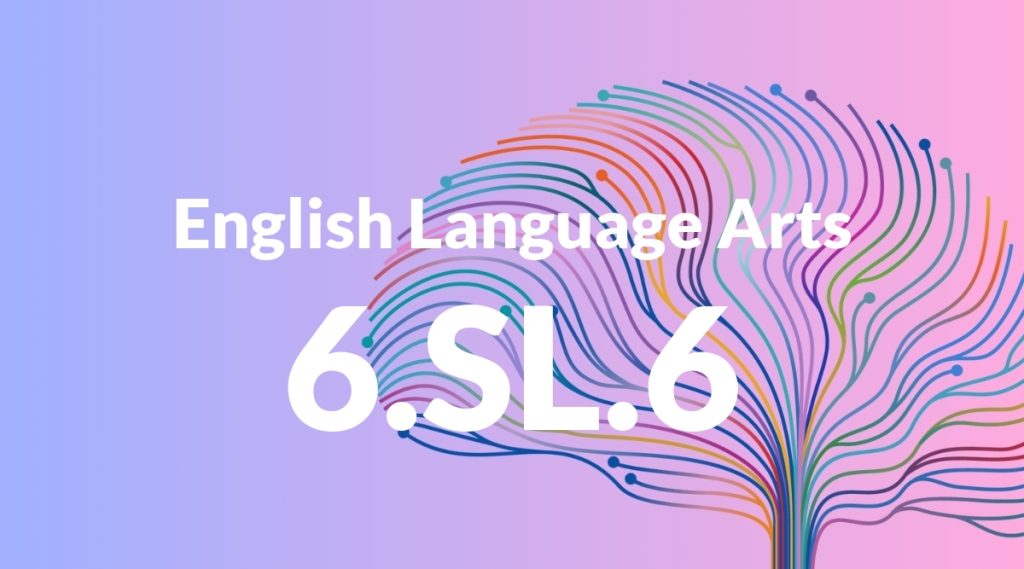Standard: 6.SL.6 – Adapt speech to a variety of contexts and tasks, demonstrating command of formal English when indicated or appropriate. (See grade 6 Language standards 1 and 3 for specific expectations.)
Grade level: Grade 6
Subject: English Language Arts
Domain: Speaking & Listening
Teacher Overview
This standard focuses on helping students adapt their speech to various contexts and tasks, demonstrating command of formal English when appropriate. This skill is crucial for effective communication in both academic and real-world settings. Students should have a basic understanding of the differences between formal and informal language and some experience with public speaking.
Mastering this standard will prepare students for effective communication in diverse situations, enhancing their public speaking, debate, and formal writing skills.
Common Misconception 1
Some students may believe that formal language is always necessary. This misconception can lead to inappropriate language use in casual or collaborative settings, where a more relaxed tone might be more effective.
Intervention 1
Introduce role-playing activities where students practice speaking in different contexts, helping them understand when formal language is appropriate and when it is not.
Common Misconception 2
Another common misconception is that adapting speech requires a complete change in personality or voice. This can make students feel uncomfortable and inauthentic.
Intervention 2
Use examples and modeling to show how speakers can adjust their tone and vocabulary while staying true to their own voice and personality.
Prerequisite Knowledge
Students should have a basic understanding of formal and informal language, as well as experience speaking in front of others in various settings.
Subsequent Knowledge
After mastering this standard, students will be able to effectively communicate in more complex and varied situations, such as public speaking events, debates, and formal writing.
Instructional Activities
- Role-playing different scenarios to practice adapting speech.
- Group discussions with assigned roles to practice formal and informal language.
- Mock interviews to practice formal speech.
- Storytelling sessions to younger students to practice clear and engaging speech.
- Debate sessions to practice formal argumentation.




